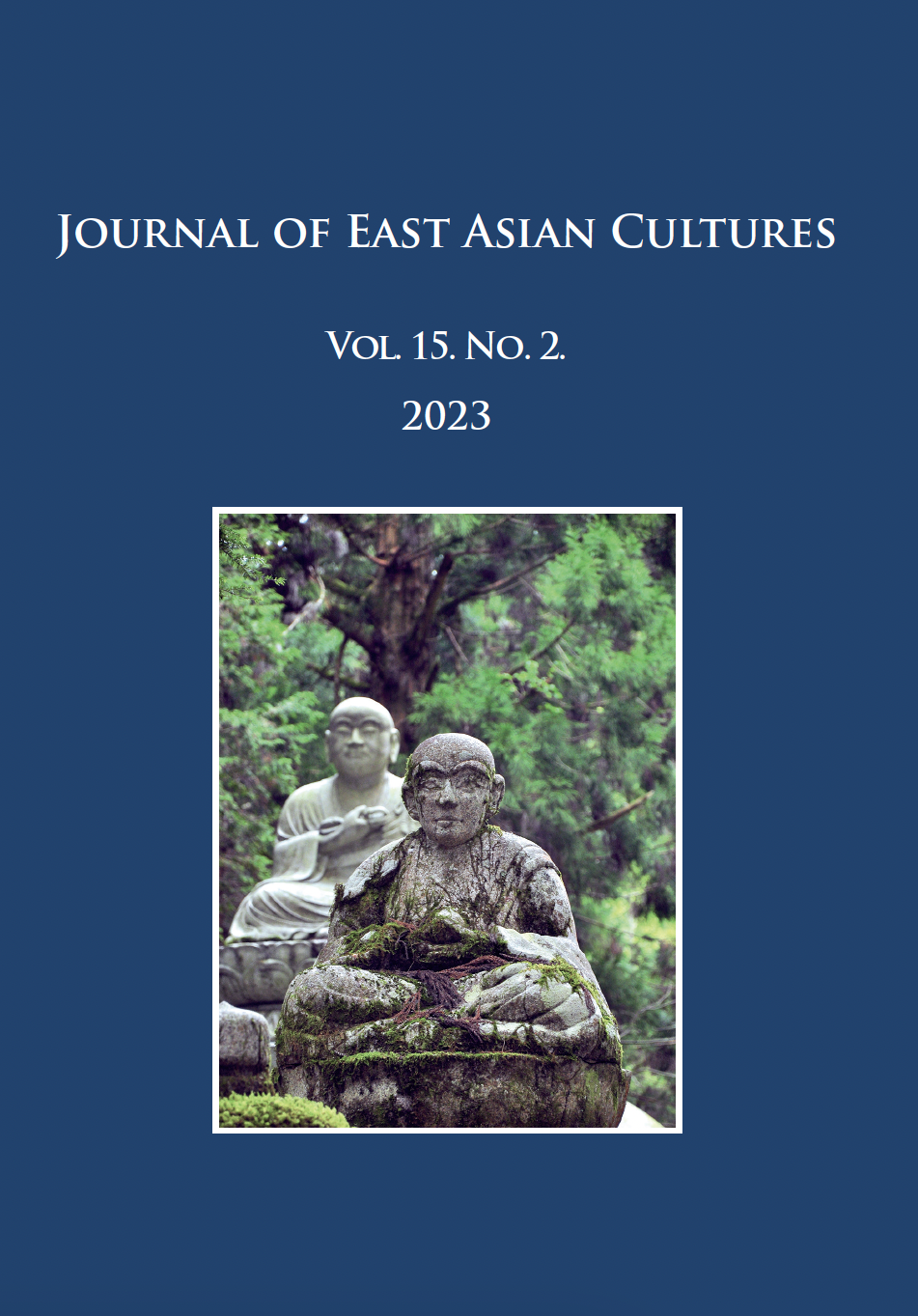Published 2023-09-30
Keywords
- Daochuo,
- Pure Land School,
- True Pure Land School,
- Anleji,
- Amituo
- Amituo’s vows,
- Amituo’s Pure Land,
- other power,
- nianfo,
- Latter Days of the Dharma ...More
How to Cite

This work is licensed under a Creative Commons Attribution-NonCommercial 4.0 International License.
Abstract
Daochuo 道綽 (562–645) is revered as a patriarch of both the Pure Land and the True Pure Land schools of Buddhism in Japan. In his Anleji 安楽集 he makes a variety of arguments about the necessity and importance of relying on the “path of easy practice” whereby one aspires to enlightenment through birth in the Amituo’s Pure Land based on the working of the other power of Amituo’s vows. Daochuo’s prioritization of the Pure Land teachings in well know both inside and outside of Japan, but previous scholarship has focused particularly on Daochuo’s arguments that the Pure Land teachings should be taken as the centerpiece of Buddhism due to the degenerate nature of the age and the inferior capacities of the people. Therefore, previous scholarship in both Japanese and English on Daochuo has primarily characterized him as offering an easy practice for incompetent people who were unlucky enough to have been born at a time far removed from Śākyamuni.
Through a careful analysis of passages in the second fascicle of the Anleji, in the first section of this paper I show that this understanding of Daochuo’s view of the “path of easy practice” fails to take into account the severity of his criticisms of the Buddhist practices that were preached in the Buddhist scriptures and prevalent at his time and therefore mischaracterizes the nature of his choice of Pure Land Buddhism as the most effective and excellent form of Buddhism and the only avenue for anyone at any time, regardless of their individual capacities or temporal relation to a Buddha, to genuinely fulfill the Mahayana ideal.
Although Daochuo took a very broadminded stance toward practice, holding that any practice undertaken with a desire to be born in the Pure Land would qualify the practitioner to receive the benefits of the other power of Amituo’s vows, there are also several points in the Anleji where he singles out the practice of the nianfo 念仏, particularly vocal recitation of the nianfo, as the most appropriate and effective practice for people to engage in. In the second section of this paper, I introduce the passages where Daochuo encourages the practice of the nianfo and show that he prioritized it both because he held it was most appropriate for the sentient beings of the Latter Days of the Dharma and because it afforded practitioners with a variety of benefits that were not available to those who sought after birth in the Pure Land through other practices.
References
- SSZ Shinshū shōgyō zensho 真宗聖教全書. 5 vols. Kyoto: Ōyagi Kōbundō, 1941.
- T Taishō shinshū daizōkyō 大正新脩大蔵経. 85 vols. Edited by Takakusu Junjirō 高楠順次郎 and Watanabe Kaigyoku 渡邊海旭. Tokyo: Taishō Shinshū Daizōkyō Kankōkai, 1924–1932.
- Chappell, David 1976. Tao-ch’o (562–645): A Pioneer of Chinese Pure Land Buddhism. PhD diss. Yale University.
- Michael Conway マイケル・コンウェイ 2011. ‘Zendō kyōgaku no gensen to shite no Anrakushū: Honganron to gyōgōron o chūshin ni’ 善導教学の源泉としての『安楽集』:本願論と行業論を中心に [The Anleji As the Fount Of Shandao’s Thought: With a Focus On the Understanding Of the Original Vow and Practice], Shinran kyōgaku 親鸞教学 97: 68–71.
- Kōgatsu-in Jinrei 香月院深励 1912. Anrakushū kōgi 安楽集講義 [Lectures on the Anleji]. 6 vols. Kyoto: Gohōkan.
- Makita Tairyō 牧田諦亮, Naomi Gentetsu 直海玄哲, Miyai Rika 宮井里佳 1995. ‘Dōshaku: Sono rekishizō to jōdo shisō’ 道綽:その歴史像と浄土思想 [Daochuo: His Historical Image and Pure Land Thought]. In: Jōdo bukkyō no shisō 浄土仏教の思想 [Pure Land Buddhist Thought], vol. 4. Tokyo: Kōdansha.
- Takao Giken 高雄義堅 1937. ‘Mappō shisō to shoke no taido’ 末法思想と諸家の態度 [Mappō Thought and the Attitude of the Schools], part 1. Shina bukkyō shigaku 支那仏教史学 1.1: 1–20.
- Tanaka, Kenneth 2004. Pure Land Buddhism: Historical Development and Contemporary Manifestation. Bangalore: Dharmaram Publications.
- Yamamoto Bukkotsu 山本仏骨 1959. Dōshaku kyōgaku no kenkyū 道綽教学の研究 [Research on Daochuo’s Doctrines]. Kyoto: Nagata Bunshōdō.

